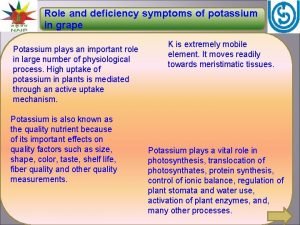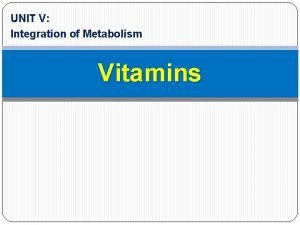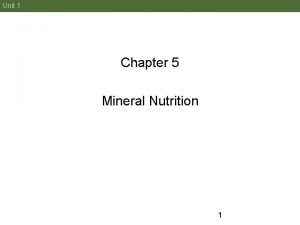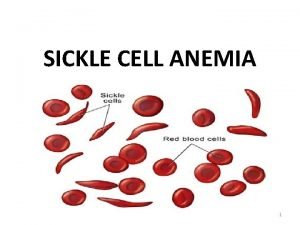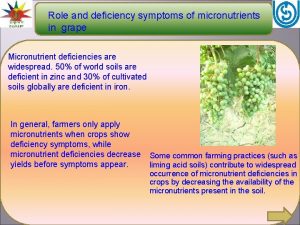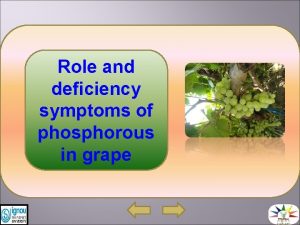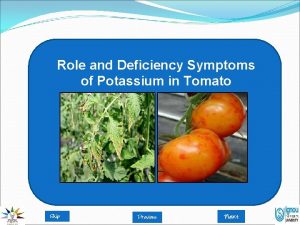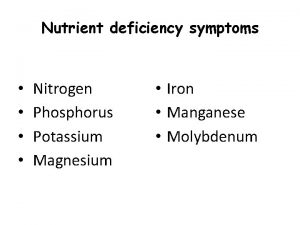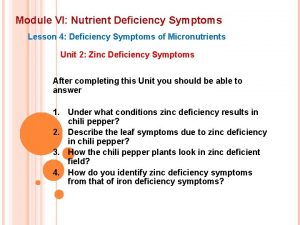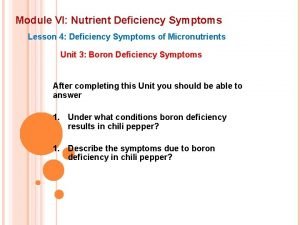Role and deficiency symptoms of potassium in grape








- Slides: 8

Role and deficiency symptoms of potassium in grape Potassium plays an important role in large number of physiological process. High uptake of potassium in plants is mediated through an active uptake mechanism. Potassium is also known as the quality nutrient because of its important effects on quality factors such as size, shape, color, taste, shelf life, fiber quality and other quality measurements. K is extremely mobile element. It moves readily towards meristimatic tissues. Potassium plays a vital role in photosynthesis, translocation of photosynthates, protein synthesis, control of ionic balance, regulation of plant stomata and water use, activation of plant enzymes, and, many other processes.

For better crop growth and yield, K should be given adequately. It is therefore, important to have knowledge about the role and symptoms occurs due to K deficiency in grapes. To maintain sustainability of soil and growth of the vine, it is important to supply potassium partially through inorganic and partially through organic source. Before adapting integrated nutrient management practice in grapevine, it is important to know the role and deficiency symptoms of potassium on mango. Therefore in this RLO you will learn the role and deficiency symptoms of potassium on mango.

Objective After completing this lesson, you will be able to: Explain the role and deficiency symptoms of potassium in grapevine

Role of potassium in grapevine Potassium is an important element for plant growth and development It helps in synthesis of amino acids, and assisted regulation of water in plant system K also increases the ability of the plant to withstand stress conditions, such as dry, cold, salinity and attacks of diseases and pests. Potassium application influenced the cellular and tissue differentiation and formation of inflorescence.

Role of potassium in grapevine Potassium influenced transforming the vegetative promordia. It promotes early initiation of floral primodia in Anab-e-Shahi variety. It incases number of bunches per vine. K increases carbohydrates content in petiole which in turn induces larger cluster primordia.

Deficiency symptoms Potassium deficiency symptoms appeared in early summer. Symptoms start from the leaf margin and the leaf colour fades to pale or yellow green in white grapes In black grapes leaf colour fades in reddish black. Potassium deficiency (Treeby et. al. 2004).

Deficiency symptoms Marginal burning and upward or downward curling of the leaf edge follow the chlorosi Potassium deficiency in grapes restricted root growth. Other less common symptoms include reduced bunch weight, uneven berry ripening and blackening of leaves.

Toxicity symptoms of Potassium Like phosphorus, high levels of potassium do not directly affect the vine or fruit but may limit calcium and magnesium uptake. Increase grape juice p. H levels. Potassium toxicity symptoms
